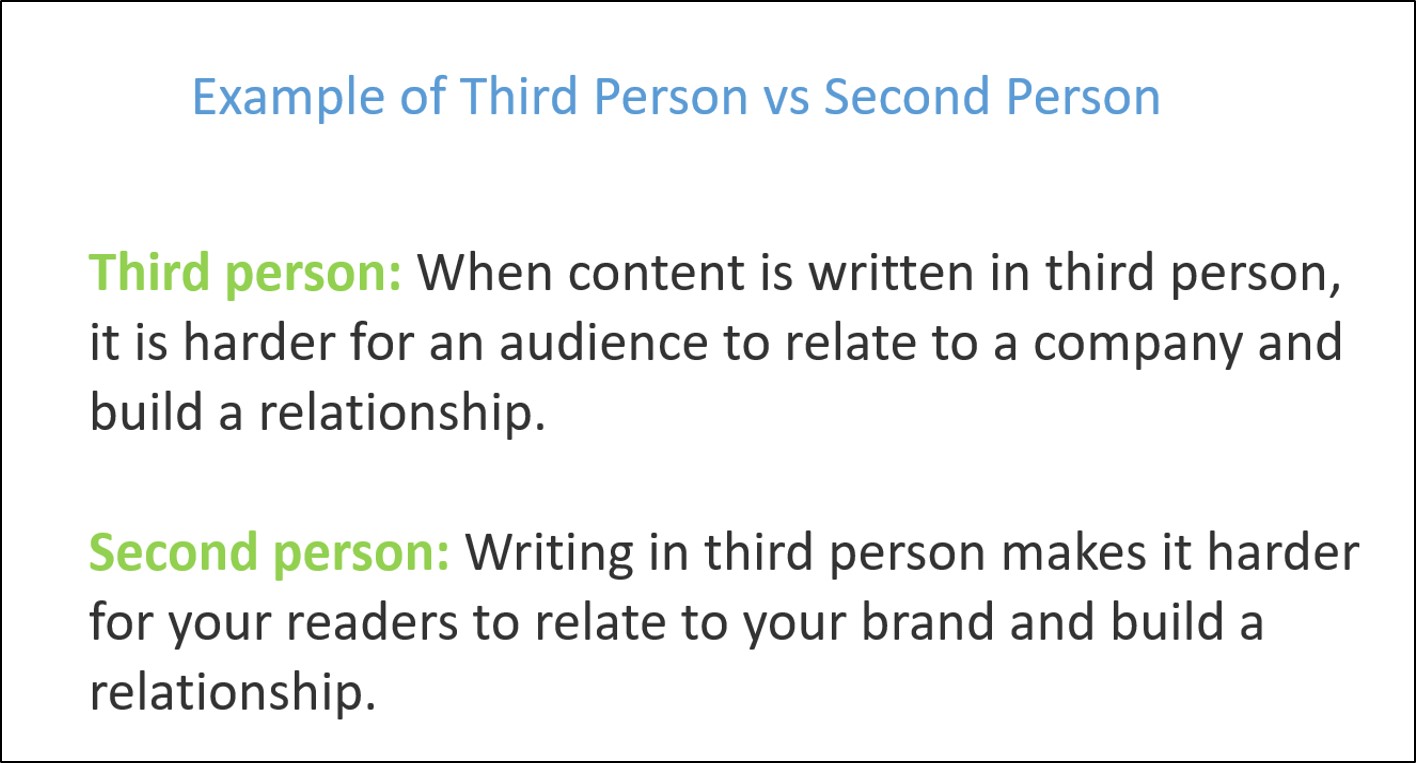Quick Fix: Ditch the Third Person
At the end of May, I am holding a random drawing for a $50 Amazon Gift Card. To be entered in the drawing, subscribe (box at the right) to my Boring to Brilliant B2B blog. You will also get one additional entry into the drawing for every relevant comment (no spam) you post to the B2B blog by 11:59 pm ET. May 31st. Note that comments on my Content Marketing Writer blog do not count towards this contest.
I personally think that it’s impossible to make someone feel something (which is my definition of great B2B content) if the entire blog post, article, whitepaper, or podcast feels like a business deal. When B2B content is written in third person, it immediately makes the content feel impersonal and formal, which creates a barrier between the content and the reader. The entire tone of the content feels like you are writing for the business, not the person reading the content.
On the other hand, using second person shows that you also view your customers as real people with real problems and needs, not just as a company. Changing the perspective really just changes the whole dynamic of the content and the tone. It’s a small change that gives the reader the overall feeling that you understand them and are trying to solve their problems. Most importantly, writing in second person tells the reader the brand views this as a personal relationship not a formal business arrangement.
In the first example, there is a sense of detachment and separation. It’s easy for the reader to also not relate to the problem being discussed, but assume you are talking about “some other company.” Also, when you write in third person, you end up using a lot more passive voice instead of active voice. When you use active voice as much as possible, you content is more engaging and interesting. For a quick lesson in active/passive voice, check out Jerry Jenkin’s blog post “How to Fix Passive Voice.” I also love this “By Zombies” trick shared in Grammarly’s Blog.
The above American Express OPEN Forum article does a great job of using second person voice to draw the reader into the topic and make it feel relevant. Some of the uses are subtle, such as the first sentence with its immediate references to “your customers” and “keeping coming back to you.” However, using second person in the second paragraph is where the magic (yes, I know it’s a cliche) happens. This copy makes the reader realize why a seemingly boring topic – customer experiences – makes such a difference. In third person, this article would likely have very little impact on the reader because the reader would not be able to connect to the topic.
Quick Fix Challenge
If your content is already written in second person, congratulations – you are on the right track. Your next move should be trying to add in an occasional first person piece when possible.
Over the next two weeks, pick one piece of content (blogs or articles work best) and write in second person. Its fine that the other posts on the blog are in third person – I promise that that grammar or content police aren’t going to come bust through your door. You just need to keep the perspective consistent throughout in each standalone piece. And I think that this is probably a case where asking for forgiveness is better than permission because odds are that the powers that be won’t even notice. But I promise that your readers will.
Share your best tips for writing in second person. How do you think it improves your content?
Worried about AI writing tools? Take control of your freelancing career. Learn how to use AI to improve your productivity. The course contains the recent info and was updated May 2023.
Register now for a 14-module self led class at the intro price of $125.



Jennifer,
I’m guilty of “passive voice” overkill. Grammarly helps combat this problem. I’ll check out “How to Fix Passive Voice.”
Good point on Grammarly. Yeah, Passive voice is hard. My AP English teacher would give you an F if you used passive voice if it was avoidable. I will add passive voice to my list of blog topics because I think using active voice really helps made B2B more interesting.
I would say writing in third person not only makes it harder for readers to relate to a brand, but it’s harder to write as well! And I agree, it comes across as more distant and formal as opposed to conversational and relatable. I have some client projects where I’m forced to write in third person, but I much prefer writing in second person.
Me too! It just feels more natural and I think that comes to the reader because it’s so much harder to writer and so much harder to write a great post in third person. So I think the deck is really stacked against third person from the start.
Great post. I have a client in B2B who is fixed on 3rd person. It pains me because I know we could become more relatable with a simple change to 2nd – maybe not the data sheets but in so much else. I’ve been gathering articles that I may one day present to them to try to steer them towards a more conversational style. Thanks for posting!